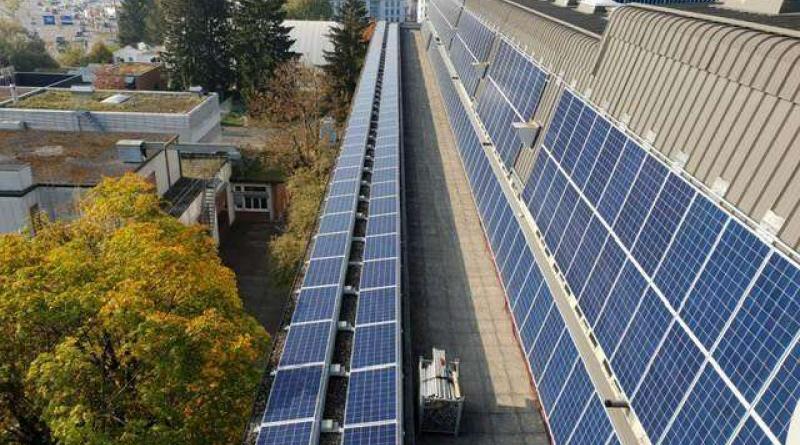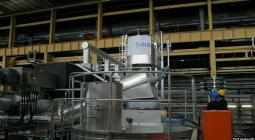Thought experiment: Switzerland without fossil fuels. Can that succeed?

- Summary: A new study shows how much work still lies ahead of us if Switzerland is to do without fossil fuels in the future. There are two possible solutions: storing large amounts of energy in summer and limiting our demand in winter, or generating energy in the 'sunny south' or 'windy north' of the world and transporting it here.
If we want to get rid of fossil fuels nationwide, there is a lot to do. It will be a generation project, that much is clear. Empa researchers Martin Rüdisüli, Sinan Teske and Urs Elber have now calculated how long and steep the road to a sustainable energy system might be; their study was published at the end of June in the journal Energies.
The researchers chose a conservative approach and initially collected real data on electricity consumption, heating requirements and hot water consumption in Switzerland. These data then served as the basis for a thought experiment. Switzerland's electricity requirements are still quite easy to determine: The Swiss grid operator Swissgrid provides detailed values for every quarter of an hour on every day of the year. Heating energy and hot water requirements are becoming more difficult. The Empa experts used data from the district heating supplier REFUNA, which supplies several communities in the lower Aare Valley with waste heat from the Beznau nuclear power plant. A data analysis showed that the heat requirement of the connected houses correlates quite well with the outside temperature -- and at nights warmer than 18 degrees Celsius, the heat is therefore only used for process water and shower water.
Electrifying heating systems and cars
For their thought experiment, the researchers made various presumptions. Firstly, most Swiss residents behave like people in the lower Aare Valley and live in similar buildings. Secondly, in order to get away from heating oil and natural gas, the heating requirements of all buildings will first be reduced by around 42% through renovation measures; then 3/4 of the remaining heating requirements in houses and apartments renovated in this way will be realised with electric heat pumps. And thirdly: Mobility will be electrified to the extent that approximately 2/3 of all private car journeys can take place electrically, which corresponds to approximately 20% of all kilometres driven. Freight traffic and long-haul journeys, on the other hand, are not so easy to convert, which is why they were excluded from the electrification of mobility in the study.
Nuclear power plants no longer play a role in the Empa study -- because the phase-out of nuclear power has been decided since the referendum on the Energy Act of May 2017. Therefore, the researchers expected a strong expansion of photovoltaics; half of all roof surfaces in Switzerland rated as good to outstandingly suitable within the framework of the http://www.sonnendach.ch project are equipped with solar cells. This corresponds to about one third of all roof areas in Switzerland.
How much does the demand for electricity increase?
Next, the researchers determined the resulting electricity consumption, which is likely to rise by around 13.7 terawatt hours per year due to heat pumps and electric vehicles -- i.e. by around 25 percent compared to today. Even more alarming than this significant increase in consumption, however, was the temporal gap between electricity generation and demand: solar cells produce the most electricity in summer -- but heat pumps and heated cars require a particularly large amount of electricity in winter. This results in a seasonal supply gap.
This could be compensated for by importing electricity from neighbouring countries, as is already the case today in the case of shortages. But our CO2 balance will probably suffer as a result -- because electricity from Europe often massively worsens the CO2 balance of Switzerland, which has been so carefully electrified. Heat pumps and electric cars therefore benefit the climate the most if the electricity required for them is also renewable.
What do the researchers suggest?
However, the Empa study also provides some valuable information on how to implement a low-CO2 energy system. Firstly, it makes most sense to replace oil-fired heating systems with heat pumps if the buildings are insulated using state-of-the-art technology. Because a heat pump without appropriate insulation is significantly less efficient. Secondly, each nuclear power plant must be replaced with about eight times the photovoltaic output. Why? A nuclear power plant delivers around 8,000 hours of electricity per year -- a solar cell, however, only 1,000 hours. This means a large number of solar panels -- on all available surfaces. Thirdly, we need as much storage capacity as possible for solar energy -- both local battery storage facilities and pumped storage facilities as well as other storage technologies, in particular (geothermal) heat storage facilities, but also technologies for converting electricity into chemical energy sources. This is because the sun shines strong enough only a few hours a day to fill the storages. For the rest of the time, the stored energy has to last.
Fourthly, we must create seasonal heat storage facilities so that the electricity requirements of the heat pumps can be reduced in winter. Fifthly, we need to better match energy supply and demand. There will be plenty of solar power and heat in summer, but in winter renewable energy in particular will be a rare (and therefore expensive) commodity in the future. Sixthly -- and this is the good news: electromobility does not make the balance tilt. Under the assumptions made, the daily charging of electric vehicles at home, at work or when shopping generates only relatively low peaks in electricity demand compared with the electrical heat supply. A prerequisite for this, however, is appropriate networks with sufficient capacity.
If further renewable energies such as wind power, geothermal energy, more biomass and a little more hydropower are realised in winter in the future, the coverage gap will shrink, however, it will probably not be possible to close it completely. The electrification of heat and mobility alone will therefore not solve the problem. "For the sustainable conversion of our energy system to succeed, we need both short- and long-term -- i.e. seasonal -- energy storage technologies. That is why we should not play off energy sectors against each other, but keep all technical options open," says Martin Rüdisüli. And Sinan Teske adds: "We must learn from nature how to deal with solar energy, which is not available all year round. We could store as much as possible in summer and limit our needs in winter. Or we could look for partners in the southern hemisphere of the earth who can harvest solar energy and deliver it to Switzerland when winter is here, and vice versa."
* Source: Swiss Federal Laboratories for Materials Science and Technology (EMPA)
8 July 2019
ScienceDaily



